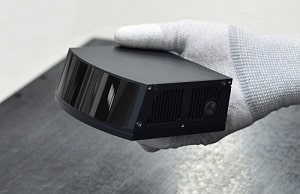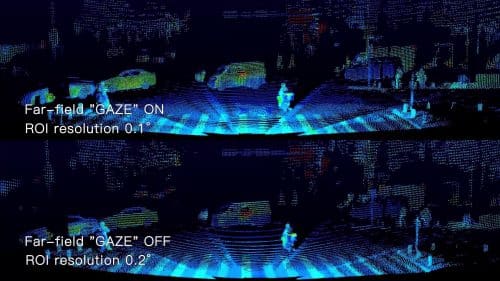Enables increased accuracy in measurements and smaller blind zones for navigation of autonomous driving systems around obstacles

Autonomous driving systems need to carefully deal with various traffic scenarios under changing road conditions, which requires LiDAR to dynamically adjust the perception focus.
Now, RoboSense and contracted customers have jointly completed the verification of a batch of M1 samples with the smart “GAZE” function. With the award-winning RS-LiDAR-M1, which provides the Hardware Intelligence(the smart “GAZE” function) and the Software Intelligence(environment perception AI algorithms) for autonomous driving, such traffic situations can be effectively handled.
When the autonomous driving vehicle operates the HWP (highway pilot) mode, the “GAZE” function gets activated to instantly increase the vertical angular resolution of the ROI area from 0.2° to 0.1° (or even higher), allowing autonomous driving to leap from safety to comfort.

The result includes doubled point cloud density and increased accuracy in measuring the height of small obstacles in front, which helps the autonomous driving system to accurately calculate the ability to navigate by taking into account the height of the wheels and the chassis, improving the recognition distance of obstacles such as vehicles by 50% and more.

When driving on congested city roads, the TJP (traffic jam pilot) function requires LiDAR to have a smaller blind zone (minimum blind zone of the M1 is 0.3m) and a higher frame rate to quickly respond to environmental changes. The “GAZE” function can instantly increase the frame rate from 10Hz to 20Hz (or even higher), and completes the TJP (traffic jam pilot) ahead of time to prevent annoying cut-ins and accidental scratches.
From June, the smart “GAZE” function has been officially launched with the new version of the RS-LiDAR-M1.







